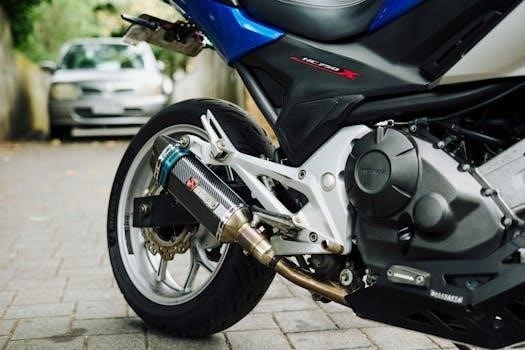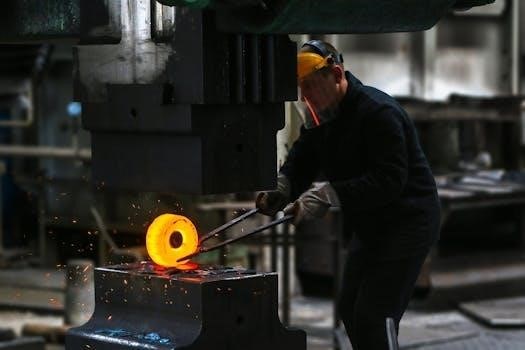The Fastway E2 hitch is a system designed for both weight distribution and sway control. It simplifies towing by providing a more stable and safer experience. This advanced hitch system is known for its ease of installation and user-friendly design, making it a popular choice for many.
E2 Hitch Overview
The E2 hitch stands out with its integrated sway control and weight distribution features, providing a more stable and controlled towing experience. Unlike traditional hitches, the E2 system is engineered to mitigate sway, enhancing safety during travel. It works by transferring weight from the rear of the tow vehicle to all axles, improving handling and reducing stress on the vehicle. The E2 hitch includes components such as spring bars, hitch head, and sway control mechanisms. These parts work together to ensure the trailer follows the tow vehicle smoothly. It’s designed for ease of use, with straightforward setup and adjustments, making it a practical choice for both experienced and novice towers. The hitch’s durability and reliability make it suitable for a variety of towing situations and trailer types. Fastway offers various models to accommodate different trailer weights and towing requirements, allowing users to choose the best option for their specific needs. The E2 hitch’s design emphasizes safety and ease, ensuring a smooth and worry-free towing experience.

E2 Hitch Installation Process
The installation of the E2 hitch involves several key steps, starting with preparation of both the tow vehicle and trailer. Follow this by properly mounting the hitch ball and then attaching the E2 components.
Preparing the Tow Vehicle and Trailer
Before beginning the physical installation of your E2 hitch, meticulous preparation of both your tow vehicle and trailer is essential for safety and optimal performance. Firstly, ensure that the tow vehicle is parked on a level surface and that the parking brake is firmly engaged. Next, carefully inspect the vehicle’s receiver hitch to confirm its compatibility with the E2 system, checking for any damage or wear that could compromise its integrity. Similarly, the trailer should be thoroughly inspected, focusing on the hitch coupler, ensuring it is in good working condition, and also verify the tongue weight of your trailer. For a successful installation, you must also refer to the specific instructions provided in your E2 hitch owner’s manual. Finally, make sure all necessary tools and safety equipment are readily available before you proceed further.
Installing the Hitch Ball
The next crucial step in setting up your E2 hitch involves the precise installation of the hitch ball. Begin by carefully selecting the correct size hitch ball that matches the specifications detailed in your E2 hitch manual and that is also compatible with the trailer’s coupler. Once you’ve identified the correct ball, securely mount it onto the tow vehicle’s receiver hitch. You’ll need to use a wrench to firmly tighten the hitch ball, ensuring it is properly torqued according to the manufacturer’s guidelines. It is absolutely essential that the ball is tightened to the correct specifications, as an improperly tightened hitch ball can lead to serious safety issues. Double-check the ball’s security by attempting to rotate it; it should not move. Before proceeding, confirm that the hitch ball’s height aligns with the trailer’s coupler for safe and level towing.
Mounting the E2 Hitch Components
After securing the hitch ball, the next phase involves mounting the essential components of the E2 hitch. This includes the weight distribution head and the sway control bars. Begin by carefully attaching the weight distribution head to the tow vehicle’s receiver, making sure to align it correctly with the previously installed hitch ball. Then, securely fasten the sway control bars to the weight distribution head, using the provided pins and clips. Follow the manual’s specific instructions regarding the positioning and attachment points for the sway control bars. It’s important to ensure that all connections are tight and secure. When installing, check that the components are aligned according to the manual and are correctly mounted to provide proper weight distribution and sway control. Double-check all parts to be sure they are firmly attached.

E2 Hitch Adjustment and Setup
Proper adjustment and setup of your E2 hitch are crucial for optimal performance. This involves understanding weight distribution guidelines and making necessary adjustments for safe towing.
Weight Distribution Guidelines
Achieving proper weight distribution is paramount when using an E2 hitch. The goal is to evenly distribute the trailer’s weight across all axles, including those of the tow vehicle. This process prevents rear sag and ensures a level ride, which is essential for safe and stable towing. Incorrect weight distribution can lead to reduced steering control, increased braking distances, and trailer sway. Following guidelines provided in the owner’s manual is key to avoiding these issues.
It is also important to be aware of the tongue weight which is the amount of weight the trailer exerts on the hitch ball. This should always be within the manufacturer’s specified limits. Exceeding the tongue weight capacity can be dangerous and may damage the hitch components. Adjustments to the hitch’s tension and the trailer’s loading distribution may be necessary to achieve the proper balance. Always check the manual and follow the steps carefully.
Adjusting for Optimal Weight Distribution
Adjusting the E2 hitch for optimal weight distribution involves fine-tuning the tension on the spring bars. These bars transfer weight from the trailer to the tow vehicle’s front axle, leveling the setup. Start by connecting the trailer and measuring the height of the tow vehicle’s wheel wells, both before and after connecting. The goal is to return the vehicle close to its unladen height. This is achieved by adjusting the number of chain links on the spring bar. More chain links will add greater tension and transfer more weight. Make these adjustments with caution, always checking to ensure the setup remains stable and within the manufacturer’s guidelines. The use of a tongue jack is necessary to adjust these bars. Remember, proper adjustment will enhance handling and safety while towing.
It might take several tries to achieve the perfect balance, so always double-check the measurements.


E2 Hitch Maintenance and Troubleshooting
Maintaining your E2 hitch involves regular checks for wear and proper lubrication. Troubleshooting can include addressing sway issues or adjustments to weight distribution; Consult the owner’s manual for detailed guidance.
Routine Checks and Maintenance
Regular maintenance of your E2 hitch is crucial for safe and reliable towing. Start by visually inspecting all components, including the hitch ball, sway control arms, and weight distribution bars, for any signs of wear, cracks, or damage. Ensure all bolts and fasteners are tightened to the manufacturer’s specifications, as loose connections can compromise the hitch’s performance. Lubricate the friction points, such as the sway control mechanism, with appropriate grease to reduce wear and ensure smooth operation. Check the condition of the trailer’s coupler and ensure it is securely attached to the hitch ball. Periodically inspect the safety chains and their attachment points for rust or damage. It is also recommended to check the torque of the hitch ball and hitch receiver bolts regularly to maintain a secure connection. Following these guidelines will help extend the life of your E2 hitch and ensure safe towing.
Troubleshooting Common Issues
When using an E2 hitch, some common issues may arise. If you experience excessive sway, double-check that the weight distribution is set up correctly and that the sway control arms are properly engaged; If the hitch is noisy, make sure all components are well lubricated, and all bolts are tightened to the recommended torque. Difficulty in hitching or unhitching can often be resolved by ensuring that the trailer coupler is properly aligned with the hitch ball and that the tongue jack is used correctly to raise the trailer. If you see any unusual wear on the hitch components, this might indicate that the weight distribution is not adjusted correctly. For any persistent issues, it is essential to refer to the manufacturer’s manual for specific guidance and to ensure the safe operation of your E2 hitch. If problems persist, seek professional help.



